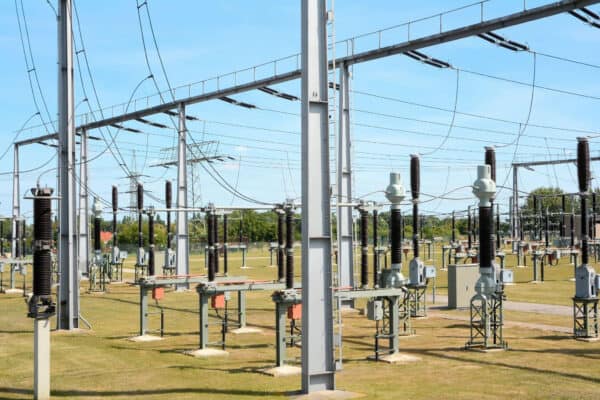
Canberra, the capital of Australia, has been witness to a dynamic energy landscape in recent years. In an era when the world is searching for cleaner, more sustainable energy options, the city isn’t far behind in its quest. However, these changes also have implications for Canberra’s power costs. To comprehend the intricacies of these costs, one has to comprehend the concept of energy regulations and their role in shaping power costs.
Regulations are crucial in determining how our cities function, especially regarding utilities like energy. Energy regulations play a vital role in pricing among the many facets of power production and energy supply. For Canberrans, the city’s residents, it’s critical to understand how these regulations influence their daily lives and monetary expenses. Therefore, analysing the correlation between these regulatory frameworks and power costs is essential for the consumers, households and commercial entities.
In this detailed article, we embark on a journey to explore the complexities of Canberra’s energy landscape, specifically focusing on how energy regulations directly impact electricity costs. We look closer at the current laws, regulatory bodies, renewable energy targets, and government incentives that define the local energy sector. Further, we also delve into the economic implications of these regulations, strategies for efficient energy consumption, and potential changes in the future energy regulatory framework.
Understanding Energy Regulations in Canberra
Understanding energy regulations requires diving deep into the realm of policymaking and administration. Energy regulations are predominantly a set of rules or directives that are laid out by authoritative bodies to dictate how energy should be produced, distributed, and consumed within their jurisdiction. The essence of these regulations is to ensure constant supply, balance consumer interests, promote fair competition within the sector, preserve the environment, and often, manage state or national energy dependencies.
Canberra’s energy sector is governed by numerous regulatory authorities at local, state, and national levels. These bodies are responsible for shaping energy policies that ensure reliable and affordable energy for Canberrans while promoting cleaner energy options.
Promoting renewable energy sources is a fundamental goal of Canberra’s energy regulations. With the world largely moving away from traditional, carbon-intensive power sources, Canberra has set ambitious renewable energy targets as part of its energy policies. Government incentives and subsidies are intended to attract investment and consumer interest in renewable energy, thereby accelerating its adoption. The establishment of sizable solar and wind farms in and around Canberra is a living example of this shift towards green energy.
The Dynamics of Power Costs in Canberra
Power costs in Canberra are influenced by an intricate blend of factors – regulatory, environmental, and market-driven conditions. The electricity pricing for consumers extends beyond mere production and supply costs, with several mechanisms at play.
Regulatory costs, system operation and network costs, wholesale electricity prices, and environmental charges all contribute to the final price that meets the consumer. Given that Canberra’s power costs have seen considerable fluctuations over the years, it is evident that the balance between supply and demand, local production versus importation of power, and the costs associated with the transition to renewable energy sources are the main contributing factors.
For many households, what makes power bills higher is not just the base cost of electricity but also additional factors such as distribution charges, infrastructure maintenance, and government-imposed levies. These expenses can add up significantly, making it essential for consumers to stay informed about pricing structures and explore energy-saving measures to mitigate rising costs.
Benchmarking Canberra’s power costs with national averages provides a comparative perspective on how the city fares with the rest of the nation. Additionally, this comparison helps understand the impact of local policies and market characteristics on Canberra’s power costs. A pressing factor is the increasing consumer demand for cleaner, greener energy and how it affects the pricing of electricity. Due to stringent environmental guidelines and high setup costs, cleaner electricity production can be more expensive and may lead to higher retail prices. However, the long-term societal benefits of adopting renewable energy sources are indisputable.

Influence of Energy Regulations on Power Generation
Canberra’s power generation gravitates between a mix of sources, including coal, solar, wind and natural gas. Each presents its unique set of challenges and opportunities. One can observe the effects of regulatory impacts on these sources by analysing factors such as operational challenges brought by variances in policy compliance, costs associated with shifting from traditional to renewable sources, and the opportunities that newer, cleaner technologies bring to electricity producers.
The transition from conventional energy sources like coal to renewable energy sources, such as wind and solar, comes with higher compliance standards. This necessitates strict adherence to regulatory norms, which can increase operational costs. However, advancements in technology and increased efficiency in the renewable sector can help mitigate some of these costs.
The advent of technology poses opportunities for renewable sector growth amidst a field of regulatory hurdles. Innovative technology in power production, such as smart grids, energy storage systems, and integration of renewable energy sources, offer promising prospects for managing grid demands and reducing costs.
The Economic Implications of Energy Regulations
While it’s clear that stringently following energy regulations leads to increased power costs, it’s important also to understand the macroeconomic repercussions. Businesses incur substantial expenditures to ensure their operational processes are compliant with environmental and regulatory guidelines. These costs inevitably get passed on to the consumers, increasing their power bills.
Moreover, these changes also affect the job market. Industries dependent on traditional sources of power might see job losses due to closure or downscaling of operations. At the same time, the renewable sector presents numerous opportunities for job creation.
While some view the initial expenses incurred in transitioning to renewable energy sources as a deterrent, others see it as a long-term investment towards a cleaner, more sustainable planet. The focus is on developing technologies that ensure less energy gets wasted and consumers have more control over their power usage. This way, energy companies can balance costs and demand more effectively, presenting a viable business case to shift towards renewable energy sources.
Navigating Future Energy Regulations and Their Impact on Costs
With regulations predicting more stringent clean energy targets, Canberra’s future energy regulations will significantly impact power costs. Consumers need to adapt to rising costs by looking for innovative ways to save energy, such as employing energy-efficient appliances and installing solar panels.
Community engagement is an integral part of shaping energy regulations and should not be overlooked. By taking part in public consultations, stakeholders can express their concerns and provide valuable inputs to the decision-making process. Additionally, timely adoption of innovative energy solutions and technologies can help buffer consumers against sudden regulatory changes.
The integration of smart grid technologies in homes and businesses equips consumers to better manage power usage and reduce peaks in energy demand. By harnessing the power of technology, consumers can find economically efficient ways to meet their energy needs without compromising on their commitments to sustainability.
Conclusion
Understanding how energy regulations impact Canberra’s power costs requires a comprehensive study of policies, market dynamics, and innovative strategies. While energy regulations clearly place an upward strain on power costs, they are an unavoidable step towards ensuring a sustainable energy future.
Just as regulations can increase power costs, they also create opportunities for innovation, growth, and cost-effective solutions to keep prices in check. Understanding these dynamics is critical for Canberrans as well as the business community to make informed decisions about energy usage. As Canberra continues to take confident strides towards a cleaner, greener future, the role of energy regulations in shaping the city’s energy landscape cannot be overlooked.
The future of Canberra’s power costs remains undetermined, with inevitable fluctuations and changes. However, in understanding and navigating potential shifts in energy regulations, residents and businesses alike can pilot their way towards an energy-efficient future. Combined with continued public engagement and infrastructure investments in renewable energy, Canberra remains poised to significantly redefine its energy landscape.
 Gearfuse Technology, Science, Culture & More
Gearfuse Technology, Science, Culture & More


